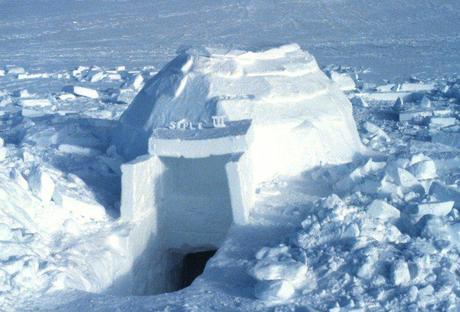A guest post by John Hutchinson
Building Shelters
After searching for cheap flights to get out on the next adventure and deciding what it is you’re going to be doing when you get there, why not make room for a bit of fun too? There’s one side of adventure travel that many people hope they won’t have to put into practice, but the skills are fun to learn – and these are survival skills.
There are all sorts of survival skills to learn and many people at some point or other, even if only on school trips in early life, have had a go at learning some of them. One that can be used to create your place to stay (this is a budget trip after all, what with the frugal flying and all) is shelter building.
There are several types of shelter that can be built in different environments. The first and perhaps most exciting being the humble igloo, used for thousands of years by the native Inuits in Canada and Greenland. Igloos are made of snow, the pockets of air in it helping with the insulation. The temporary kind was built for hunting expeditions and made to last around two nights.

First of all a suitably flat snowfield must be found where the igloo is to be pitched. The snow to use for the igloo itself is best off being the windblown well-packed stuff. Mark out the area where the igloo is to be built. The snow for the blocks can either be cut out of that area so there is a crater with a flat bottom for the igloo to start out on, or it can be cut from nearby. Snow blocks are prepared with a saw at around 15-30cm thick each. Be sure that the blocks to be placed at the bottom slant so that the structure is crafted into a dome rather than a cylinder. Once all the blocks are in place – use a stick or ski at the center of the dome for extra support if you’re worried about collapse – fill in any cracks between blocks before smoothing out both the exterior and interior with gloves. Bring an extra pair of gloves to wear afterward as the pair you use when building are likely to be very wet at the end of the process. After this the igloo is ready for use and if built correctly, can be warmer than a tent.
Another type of shelter, built in less chilly environments, is the makeshift woodland shelter. This is the one most people are likely to be familiar with. Make sure there are no dead trees nearby that might fall on the shelter in the night before beginning.
For this shelter an uprooted tree is needed. Take dead branches from the surrounding area. You will use the uprooted tree to be the base of the shelter that the branches will lean across. Push each branch into the ground at a 45 degree angle from the uprooted tree. After a suitable number of branches are up against the uprooted tree base, take handfuls of leaves and stuff them between and over the branches to insulate the shelter.
John Hutchinson has enjoyed traveling since he was a young boy when his parents first took him to visit family overseas. Since leaving home, John has tracked down family all over the world and regularly jets off to faraway lands to see distant relatives.

